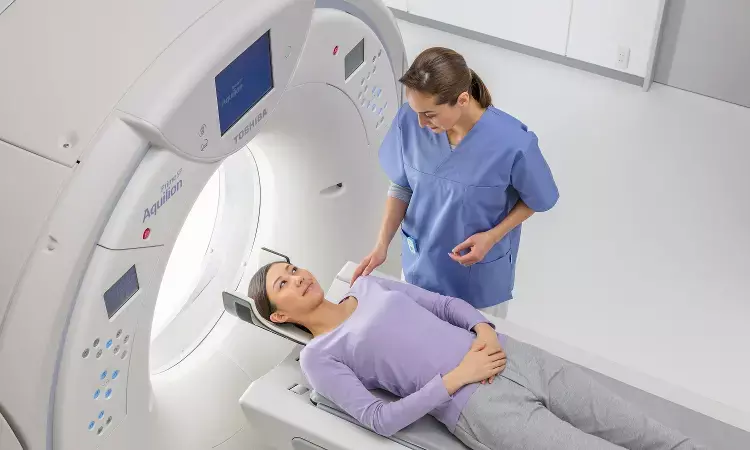- Home
- Medical news & Guidelines
- Anesthesiology
- Cardiology and CTVS
- Critical Care
- Dentistry
- Dermatology
- Diabetes and Endocrinology
- ENT
- Gastroenterology
- Medicine
- Nephrology
- Neurology
- Obstretics-Gynaecology
- Oncology
- Ophthalmology
- Orthopaedics
- Pediatrics-Neonatology
- Psychiatry
- Pulmonology
- Radiology
- Surgery
- Urology
- Laboratory Medicine
- Diet
- Nursing
- Paramedical
- Physiotherapy
- Health news
- Fact Check
- Bone Health Fact Check
- Brain Health Fact Check
- Cancer Related Fact Check
- Child Care Fact Check
- Dental and oral health fact check
- Diabetes and metabolic health fact check
- Diet and Nutrition Fact Check
- Eye and ENT Care Fact Check
- Fitness fact check
- Gut health fact check
- Heart health fact check
- Kidney health fact check
- Medical education fact check
- Men's health fact check
- Respiratory fact check
- Skin and hair care fact check
- Vaccine and Immunization fact check
- Women's health fact check
- AYUSH
- State News
- Andaman and Nicobar Islands
- Andhra Pradesh
- Arunachal Pradesh
- Assam
- Bihar
- Chandigarh
- Chattisgarh
- Dadra and Nagar Haveli
- Daman and Diu
- Delhi
- Goa
- Gujarat
- Haryana
- Himachal Pradesh
- Jammu & Kashmir
- Jharkhand
- Karnataka
- Kerala
- Ladakh
- Lakshadweep
- Madhya Pradesh
- Maharashtra
- Manipur
- Meghalaya
- Mizoram
- Nagaland
- Odisha
- Puducherry
- Punjab
- Rajasthan
- Sikkim
- Tamil Nadu
- Telangana
- Tripura
- Uttar Pradesh
- Uttrakhand
- West Bengal
- Medical Education
- Industry
Gallium-68 pentixa PET-CT promising noninvasive subtyping method for patients with primary aldosteronism

A new study by Jinbo Hu and team showed that Gallium-68 pentixa for positron emission tomography-computed tomography (PET-CT) has high diagnostic precision for distinguishing between unilateral primary aldosteronism (UPA) and bilateral primary aldosteronism (BPA). The findings of this study were published in the Journal of American Medical Association.
The preferred approach for subtyping primary aldosteronism (PA) as unilateral PA (UPA) or bilateral PA (BPA) is adrenal vein sampling (AVS). Each subtype requires a distinct course of therapy, such as adrenalectomy for UPA and medication for BPA. Nevertheless, AVS is invasive and technically challenging, and it is currently very difficult to characterize PA noninvasively. Thus, using AVS as a reference standard, this study was done to assess the efficacy of gallium-68 pentixafor positron emission tomography-computed tomography in subtyping PA.
Patients with PA were the subjects of this diagnostic investigation, which was carried out at a tertiary hospital in China. Enrollment began in November 2021, and follow-up was completed in May 2022. The recruitment of patients for gallium-68 pentixafor PET-CT and AVS. To determine the lateralization index of SUVmax, the maximum standardized uptake value (SUVmax) of each adrenal gland during PET-CT was determined. In order to evaluate the lateralization index based on SUVmax's accuracy in subtyping PA, the following metrics were used: area under the receiver operating characteristic curve (AUROC), specificity, and sensitivity.
The key findings of this study were:
43 patients with UPA and 57 with BPA were among the 100 PA patients who completed the research.
SUVmax of the adrenal glands at 10 minutes during PET-CT was strongly linked with the aldosterone-cortisol ratio in the adrenal veins.
The AUROC was 0.90 when using a lateralization index based on SUVmax at 10 minutes to identify UPA.
A cutoff value of 1.65 for the lateralization index based on SUVmax at 10 minutes resulted in a sensitivity and specificity of 1.00. 90 patients (90.0%) had diagnostic concordance between PET-CT and AVS, as opposed to 54 patients (54.0%) between standard CT and AVS.
Gallium-68 pentixafor PET-CT may offer a unique and promising method for PA subtyping, however it deserves additional study in a wider population given the global need for safe, accurate, and noninvasive alternatives to AVS.
Reference:
Hu, J., Xu, T., Shen, H., Song, Y., Yang, J., Zhang, A., Ding, H., Xing, N., Li, Z., Du, Z., He, W., Sun, Y., Cai, J., Li, Q., … Chen, Y. (2023). Accuracy of Gallium-68 Pentixa for Positron Emission Tomography–Computed Tomography for Subtyping Diagnosis of Primary Aldosteronism. In JAMA Network Open. https://doi.org/10.1001/jamanetworkopen.2022.55609
Neuroscience Masters graduate
Jacinthlyn Sylvia, a Neuroscience Master's graduate from Chennai has worked extensively in deciphering the neurobiology of cognition and motor control in aging. She also has spread-out exposure to Neurosurgery from her Bachelor’s. She is currently involved in active Neuro-Oncology research. She is an upcoming neuroscientist with a fiery passion for writing. Her news cover at Medical Dialogues feature recent discoveries and updates from the healthcare and biomedical research fields. She can be reached at editorial@medicaldialogues.in
Dr Kamal Kant Kohli-MBBS, DTCD- a chest specialist with more than 30 years of practice and a flair for writing clinical articles, Dr Kamal Kant Kohli joined Medical Dialogues as a Chief Editor of Medical News. Besides writing articles, as an editor, he proofreads and verifies all the medical content published on Medical Dialogues including those coming from journals, studies,medical conferences,guidelines etc. Email: drkohli@medicaldialogues.in. Contact no. 011-43720751


